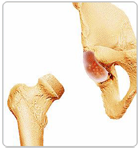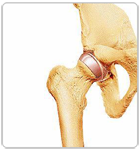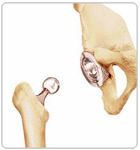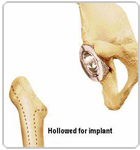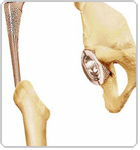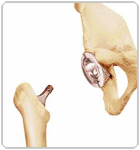Dr Niraj Vora - About Total Hip Replacement Overview

From past forty years, replacement surgery of hip has been successfully performed. In India, thousands of patients have recovered through hip replacement surgery. It is very useful for resolving variety of hip disorders and also helps a disabled person to get back to his normal life. It also improves the ability to walk, relieves from pain and gains back the range of motion.
Anyone who is suggested for a hip replacement surgery definitely would like to know about the pros and cons of the surgery. Go through the details about the surgery in very simple language to understand it better.
Dr Niraj Vora, as a Hip Replacement Surgeon in Mumbai has listed a few things that need to be followed during and after surgery as it is very important to understand the details of this complex surgery. Here you can get a glance on how medical and paramedical staff will deal with you and suggest about achieving good results.
It is mandatory or rather suggested to have a thorough look at the information before you undergo the surgery. If you have any further queries regarding the surgery, you are always welcome to ask us. Dr Niraj Vora and his team of doctors are here to help and suggest you at all stages of surgery either before or after.The condition of patient differs from one individual to another, and in the same individual with two operated hips. The status of the patient differs on various reasons like age, general health of the patient, joint condition of the body and the real cause for Arthritis.
However, there is no guarantee assured for any kind of surgical process, it can only better the status of the patient to some extent on the functioning of joints up to 10 years in many cases. It is natural to believe that every surgery has certain risks involved. You have to be mentally strong enough to handle the risks and shortcomings after the surgery.
The surgery involves bone resurfacing that has soft tissue realignment and balancing. If deformation is accurate, the patient is discharged after five days of the operation date in most of the cases. It helps in removing the stress, social inconvenience while reducing the cost factor to the family.
The patient can walk the next day after surgery and can go home in 5 to 7 days.
A Total Hip Replacement (THR) - also called a hip arthroplasty - is a surgical procedure that re-forms the hip joint.
In THR, the head of the femur (the bone that extends from the hip to the knee) is removed along with the surface layer of the socket in the pelvis (the two large bones that rest on the lower limbs and support the spinal column).
- The head of the femur, which is situated within the pelvis socket, is replaced with a metal ball and stem. This stem fits into the shaft of the femur.
- The socket is replaced with a plastic or a metal and plastic cup.


